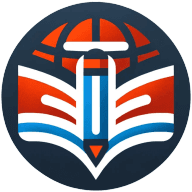7 Teaching Approaches That Help Connect With Disengaged Students
Discover effective teaching strategies for reconnecting with disengaged students based on insights from education experts. This article explores proven approaches to building meaningful student connections before diving into academic content. Learn how curriculum can serve as a supportive scaffold rather than a restrictive structure in the classroom.
Building Connections Before Academic Content
One approach that really helped me reach a disengaged student was building a connection first, before focusing on academics. This student had checked out of learning because they felt defeated by constant struggle. Instead of diving straight into lessons, I spent time learning about their interests, which were basketball, video games, and funny YouTube clips, and started weaving those into our sessions. For example, we'd use their favourite basketball team, the Raptors', stats for math problems or create writing prompts based on Minecraft storylines.
Once they saw that learning could reflect their world and that I genuinely cared about what mattered to them, their motivation completely shifted. What made the biggest difference was realizing that engagement often begins with relationship and relevance, not just instruction.

Curriculum as Scaffold Not Cage
On one occasion, we had a student who had not logged in recently (not because they were lazy), but because the curriculum felt inauthentic to them. So instead of driving compliance compliance, we shifted to project-based personalization, and their teacher and learning specialist asked about their interests outside of school, and together built a small project that was tied to the curriculum-- using math to draft a budget or science to explore sustainability at home.
The student directed the presentation method; video, infographic or written piece. And just like that the lessons became tools for learning about something that provided them with real engagement and meaning for them. Two weeks later, the student was attending live classes, questions were being asked, and they even submitted work early.
What did we learn? That engagement does not come from compliance, it comes from letting students see themselves in the learning. At Legacy, we view the curriculum as a scaffold, not a cage! This small change transforms disengagement into energy, and kids feel ownership instead of obligation.

Student-Led Inquiry Develops Intrinsic Motivation
Student-led inquiry transforms the classroom dynamic by placing genuine curiosity at the center of learning experiences. When disengaged students take ownership of their questions, they develop intrinsic motivation that textbook assignments rarely inspire. The teacher steps into the role of facilitator, guiding exploration rather than dictating content, which validates students' intellectual autonomy.
This approach naturally differentiates instruction as each learner pursues questions at their appropriate challenge level and pace. The resulting investigations often cross traditional subject boundaries, creating relevant connections that static curricula might miss. Consider how your next unit could begin with student questions rather than teacher objectives, and watch engagement levels rise.
Authentic Storytelling Creates Meaningful Learning Pathways
Authentic storytelling creates powerful connections when woven into daily lessons, making abstract concepts concrete through relatable narratives. Students who feel disconnected often reengage when course material incorporates stories that reflect their experiences or interests. Teachers can select diverse stories that represent various backgrounds, helping students see themselves in the curriculum.
This storytelling approach transforms routine lessons into meaningful exchanges where students feel their identities are valued and understood. The emotional resonance of well-chosen stories opens pathways to learning that might otherwise remain closed for disengaged learners. Begin incorporating authentic storytelling in your classroom tomorrow by asking students to share their own connections to the material.
Assessment Choice Honors Diverse Understanding Methods
Flexible assessment with student choice honors the diverse ways learners can demonstrate understanding beyond traditional tests and papers. When students select their preferred method to show mastery, they invest more deeply in the creation process and produce higher quality work. The opportunity to choose reduces anxiety for many disengaged learners who may have experienced repeated failure with conventional assessments.
Assessment options might include creative projects, oral presentations, digital content creation, or traditional written formats based on individual strengths and interests. This approach recognizes that genuine understanding can be expressed through multiple means while still maintaining academic rigor. Reimagine your next assessment by offering students at least two different ways to demonstrate their learning.
Focus on Strengths Creates Growth Foundation
Strengths-based feedback systems shift the focus from deficits to possibilities, reframing how disengaged students view their academic identities. Rather than highlighting what needs fixing, teachers can first acknowledge what students are doing well, creating a foundation of competence upon which to build. This communication approach helps learners recognize their growth over time instead of seeing only the distance to an abstract standard.
Regular strengths-focused conversations create a psychologically safer environment where students become more willing to take risks and engage with challenging material. The language teachers choose shapes how students understand their capabilities and potential in profound ways. Start by identifying one specific strength for each disengaged student and explicitly communicate this observation in your next interaction.
Real-World Problems Reveal Academic Purpose
Real-world problem-solving scenarios bridge the gap between classroom learning and students' lives outside school walls. Disengaged learners often struggle to see the purpose behind academic exercises, but tackling authentic challenges reveals the practical value of school content. These scenarios invite diverse perspectives and solutions, validating the varied experiences students bring to the classroom community.
The complexity of real problems requires sustained effort and collaboration, drawing reluctant participants into meaningful roles within group work. Students develop agency when their solutions address actual needs or challenges in their communities or beyond. Transform your next lesson by centering it around a genuine problem your students care about solving.

